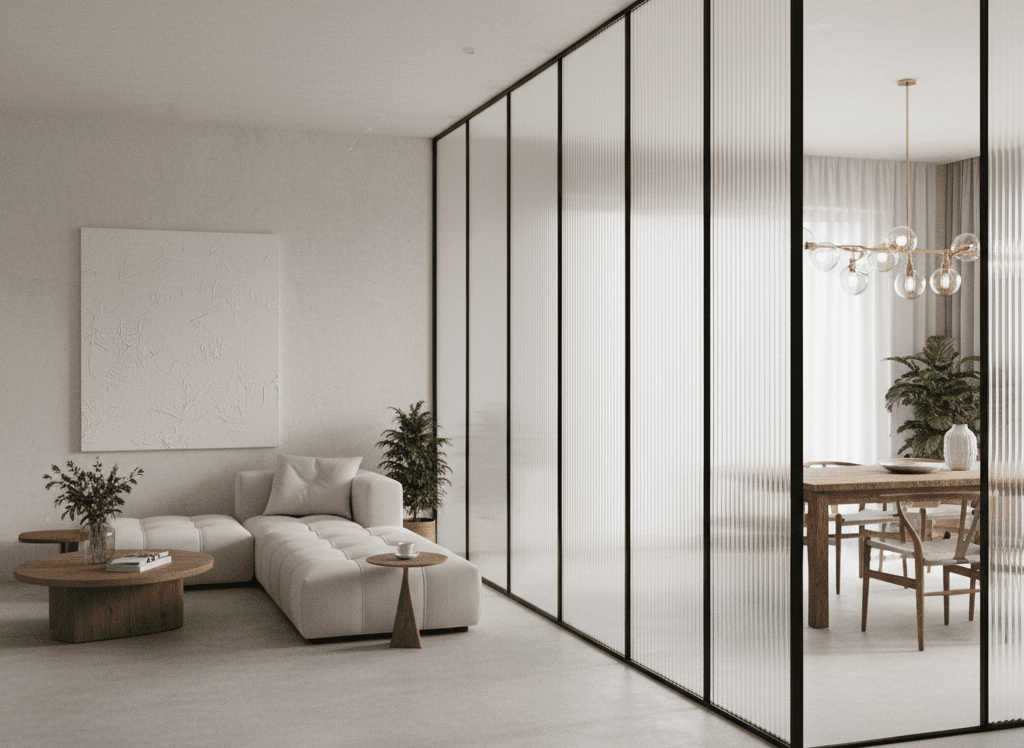10 Striking Interior Trends for 2025
Minimalism is old news. Or maybe it never was. That’s the tricky thing with trends: they come back around, reinvented, dressed in new clothes. In 2025, minimalism is not a blank room with a lonely chair anymore—it’s warmth, a bit of mess, functionality stitched into the bones of the space. The goal isn’t absence. It’s clarity. And honestly, I think we’re finally starting to get it.
Walk into a contemporary apartment today and you’ll probably see lines blurred between kitchen and living, bedroom and workspace. It looks beautiful in the catalog shots but try living in it—suddenly every call echoes into your partner’s Netflix binge, or the smell of garlic lingers on your pillow. That’s why space zoning has become the lifeboat. A rug on the floor is no longer just a soft landing; it’s a line that tells your brain, this is the lounge, that over there is dinner. A sofa’s back turns into a wall. Even light fixtures carve invisible partitions in the air.
But the space doesn’t just divide itself. Designers are sneaking in walls that aren’t walls at all. The fascination with glass partitions is everywhere—offices, homes, studios. People want division without suffocation, openness with a side of privacy. Transparent boundaries keep the brightness, mute the noise, and look sleek. There’s a reason the frameless look dominates mood boards. In fact, I keep reminding myself of something I read: in recent years, frameless glass walls became popular solutions that make interiors feel light and airy. Simple statement, but it sums up the zeitgeist.
Of course, minimalism isn’t afraid of drama anymore. Designers play with bold modern decor. A neon vase in the corner, angular pendant lighting above the table, a rug that screams color when the rest of the room whispers. The room feels alive because it doesn’t pretend to be perfect. It invites imperfection—layering textures, clashing tones. Minimalism in 2025 lets in the human hand, the oddball piece that doesn’t quite fit yet somehow makes the space yours.
I sometimes think functionality hides behind aesthetics. You know when you sit down and the chair is at the exact height, the lamp throws light at your book instead of your face, the drawer opens without a grunt? That’s the invisible part of design. It’s ergonomics, sure, but it’s also empathy. Designers in 2025 sweat those details so daily life flows. Nothing grand. Just ease. And that’s the quiet power of functional minimalism—it doesn’t draw attention to itself. It just makes you comfortable.
But then comes the flip side: fantasy. People are starting to experiment with the unreal in their real homes. Digital influences seep in. Imagine stepping into a room that feels like a page from a video game. Some call it the era of metaverse interiors—surreal textures, glowing furniture, spaces that feel half-symbolic, half-functional. It’s weird, and maybe that’s the point. The future of interiors isn’t just about physical comfort. It’s about expression that bleeds between realities. Your virtual loft informs your actual apartment. Designers don’t shy away from this blend anymore—they steal ideas shamelessly from the digital realm.
But minimalism doesn’t ignore history either. The past stays stubborn. Architects still wrestle with preserving iconic buildings while making them livable. One of the most celebrated examples remains the restoration of midcentury hotel interiors. Saarinen’s swooping drama from the 1960s, layered with today’s hospitality needs. Guests sip cocktails under arches built decades ago, while charging their phones on furniture that wasn’t even conceivable back then. It’s this collision—past grandeur meeting modern practicality—that defines a new minimalist ethos: don’t erase, adapt.
And adaptation happens everywhere. In cramped city flats, zoning becomes survival. In sprawling open-plan houses, partitions prevent the echo chamber effect. Even in offices, transparency rules—literally—because glass keeps teams visible yet not deafened by chatter. Functionality bleeds into psychology. People want to see without being seen too much. They want space that breathes but still belongs to them.
Materials also speak louder now. Concrete, once considered cold, suddenly feels warm when paired with natural wood or soft fabrics. Steel frames add an industrial edge without making a room hostile. Textiles soften the hard edges. Rugs and curtains do more than decorate—they regulate acoustics, they ground space, they create zones of calm in otherwise chaotic layouts. This layering of tactile experience defines comfort in 2025.
Lighting deserves its own rant. It shapes the way we move through rooms. A track light over a desk turns that corner into a workplace. A chandelier above the table sets ritual around eating. Lamps by the sofa define rest. Minimalism embraces this choreography—light is not just illumination, it’s architecture. It signals what belongs where. Turn one off, and the zone dissolves. Turn it back on, the boundary reappears.
And color—let’s not dodge it. People are tired of beige boxes. Color blocking is creeping back in, unapologetic. One wall drenched in emerald, another chalk white. Tension sharpens the space, keeps it from slipping into monotony. The fun part? Paint is cheap. Change the hue, change the vibe. One weekend project can reset the entire emotional temperature of a room.
Some of this sounds contradictory. Minimalism loves restraint. Yet here I am talking about bold patterns, neon accents, dramatic partitions. But that’s the truth: 2025 minimalism isn’t about removing everything. It’s about cutting the clutter but leaving room for drama where it matters. Functionality anchors it. Personality dresses it.
What fascinates me most is the cultural layering. Scandinavian calm still whispers through wood tones and cozy textiles. Japanese wabi-sabi shows up in the embrace of imperfection, cracked ceramics displayed with pride. Mediterranean design adds breezy whites and stone textures. All these strands weave into minimalism’s new face. It’s no longer a single aesthetic—more like a chorus of philosophies saying: simplify, but don’t sterilize.
Another thing: people are more conscious of sustainability. Recycled materials sneak into countertops. Upcycled furniture makes appearances in glossy shoots. It’s not a marketing stunt; it’s survival instinct. Homes aren’t just designed to look good—they’re built to last, to breathe, to align with the planet’s limits. Minimalism fits this narrative because it resists waste. You buy less, but you buy better.
Of course, not everything lands perfectly. Some interiors look like sterile airports trying too hard to be chic. Others overdo the “personal touch” and descend into chaos disguised as eclecticism. That’s fine. Trends stumble. What sticks is the underlying shift toward intentionality. People want rooms that feel clear, functional, and expressive at the same time. A messy balance, but maybe that’s what makes it human.
Near the end of all this, I realize minimalism isn’t just a design philosophy anymore. It’s a cultural mood. A reaction to years of clutter—digital, physical, mental. Stripping back, focusing on essentials, making space to breathe. And ironically, the most futuristic interiors don’t look futuristic at all. They look calm. They let in light. They allow imperfections. They carve space without suffocating. They acknowledge history without being trapped by it. That’s minimalism now: grounded, functional, alive.

FAQs
Q: What defines minimalist design in 2025?
A: Clarity, function, and personality. Spaces use fewer objects but highlight bold accents, smart partitions, and tactile layering.
Q: How do glass partitions improve small apartments?
A: They divide zones without blocking light, keeping spaces airy while controlling noise and adding subtle privacy.
Q: Why are rugs and lighting considered zoning tools?
A: Both create boundaries—rugs anchor floor zones, while lighting defines functional areas without solid walls.
Q: Do digital influences really matter in real interiors?
A: Yes. Virtual environments inspire surreal shapes, glowing surfaces, and hybrid aesthetics that cross into physical design.
